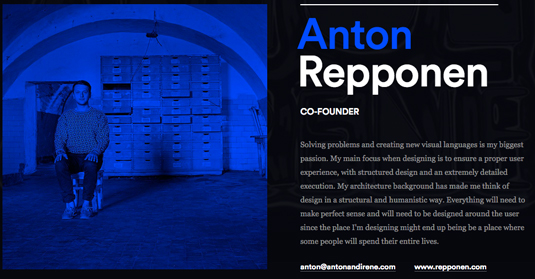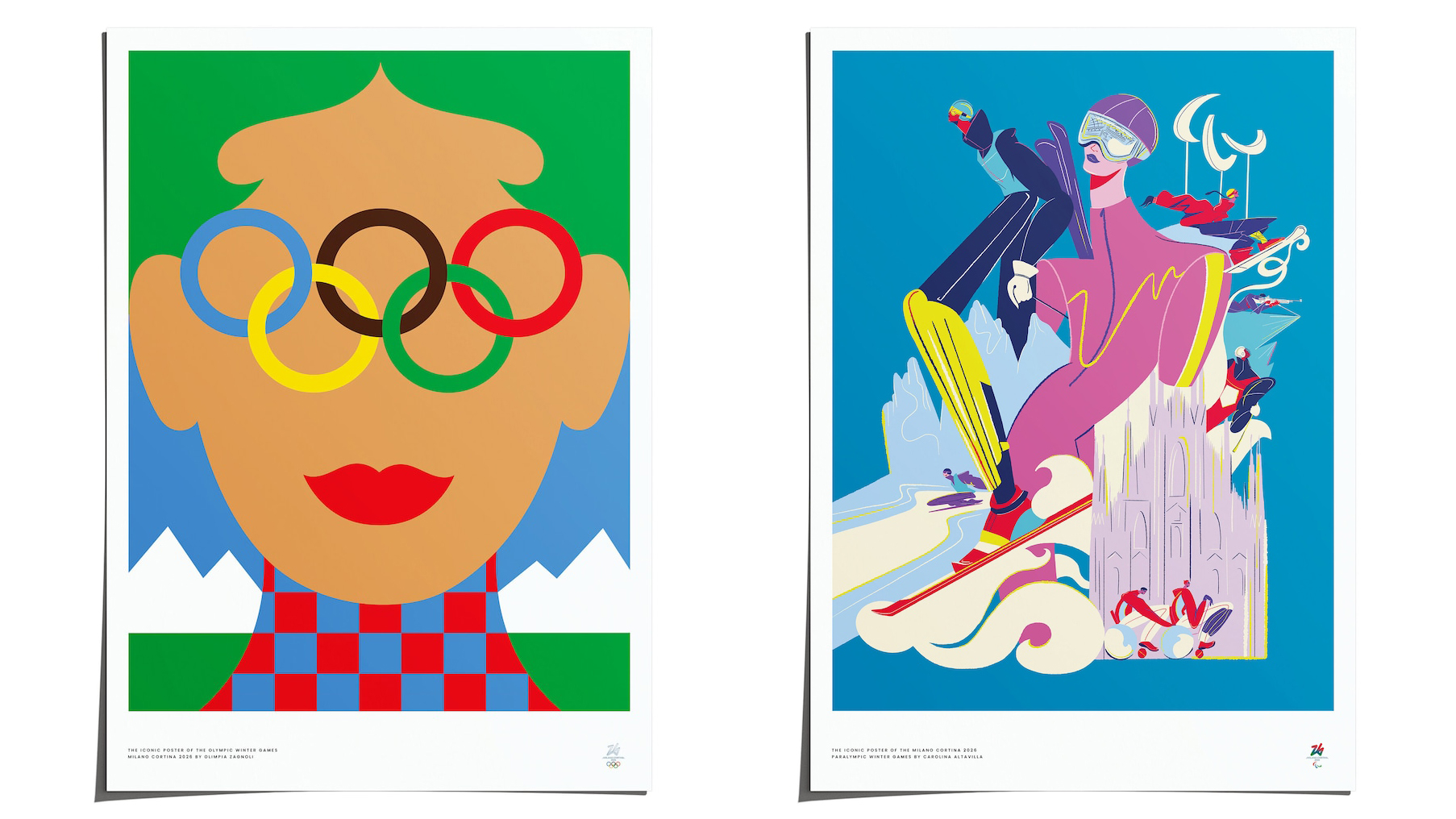Discover the art of great user experience
Irene Pereyra explores how to plan, create, and manage clients through the process of making amazing UX.
Generate New York is the conference for web designers presented by net magazine and Creative Bloq. A source of inspiration, education and networking opportunities, this year's Generate will be packed with more top content from world-class speakers - including the subject of this article. Buy your ticket today!
Irene Pereyra is a user experience designer and was the global director of UX at Fantasy Interactive for six years. Recently she set up a bespoke design studio with her creative partner, designer Anton Repponen.
"We couldn't think of any studio name that didn't make us cringe, so we decided to name it Anton & Irene," she told us.

While the pair was at Fantasy Interactive they led the global creative department. They were responsible for the redesign of USAToday.com, Wacom.com, Balenciaga.com, SportsIllustrated.com, among many other small projects for Google, Nickelodeon, The History Channel, EA, Porsche, BBC and others.
The paired turned 30 last year and had a revelation - the work they were doing stopped being challenging. They felt they were repeating ourselves and working on similar projects. This led them to start their own agency.
"I do the UX and Anton does the design, and then we have our team build it. Simple. Efficient. Fast. It's how we want to keep it, " Pereyra explained.
Pereyra will also get speaking at net magazine's Generate conference in New York, on 17 April 2015.
Daily design news, reviews, how-tos and more, as picked by the editors.
We chatted with her recently about to ensure you create the best user experiences...
How do you define 'UX'?
That's a very big question! For me personally, it's first and foremost about design, and secondly it's creating something that ultimately is functional and usable. Growing up in Amsterdam I was constantly surrounded by modernist design, and that has very heavily influenced my taste and sensibilities.
I believe that great design is practical and human-centered at its core, and starts with breaking things down to its simplest form, the straightest line from A to B.
Anything superfluous makes me uneasy. I frequently have heated debates with clients on how things can be done better with less stuff and I'm constantly advocating for the end-user. Make it simpler! Why is that there? Who needs that? Do we need it?

At what point in a project do you begin thinking about UX?
Immediately! We don't even consider taking on a project unless UX is part of it and the client understands the value of UX. I am not going to argue with clients on why they need it, if they don't believe in it there are plenty of other shops they can go with.
Having UX be part of a project is almost like a design mentality, and it's the thread that connects all the other disciplines throughout the project timeline. Therefore it's not something that you can do after the fact, it's something that you have to do right from the beginning and goes through all the way to the end.
How do you transform a client brief into a user experience?
Depends. Some client briefs are extremely directional, clear and they are asking for the right thing – those projects typically are easy to execute because that means we're on the same line as the client and the client is savvy.
Some client briefs are extremely directional, but after reading it we feel that they are asking for the wrong thing. In those cases we try to have a conversation about the ask in order to help the client understand that the brief needs to either change, or be less directional. Then sometimes the client brief is non-existent and we are free to come up with something ourselves.
Those of course can be incredibly fun, though I will admit that as a designer I prefer to have some sort of guideline from the client.
Solving problems within a certain framework of restrictions is actually more challenging and fun than getting to do whatever the hell you want. That's really what separates design from art.
Once we determine if the brief is right, Anton and I sit down and sketch out what we think makes sense and then present that back to the client in a more presentable format – a proper keynote.
If the client approves the overall idea and direction we go into actual production right after that. We never work in a typical waterfall approach so while I wireframe Anton already designs and we go back and forth with that until we reach the end of the project.

By when do you aim to achieve sign-off on your UX plans?
We include the client in our process almost on a daily basis and really dislike "grand reveal" presentations.
Typically we work for a day and then record a video walkthrough of the work for that day and send it to the client to watch at their own leisure. So little things get signed off and moved along on an almost daily basis.
Then we have some bigger milestones where the client has to officially sign something off (framework or specific pages for example), but since they have seen the progress on a daily basis and had a chance to input along the way those official sign-offs are more of a formality really to cover our asses in case the client decides to completely change something weeks later.
What are your UX golden rules?
We have a very specific way that we tackle a project. I always start with the birds-eye view of the overall page content, navigation and structure.
This determines the framework of the overall site and also includes the sitemap (where we map out all the needed pages), a features and functionality matrix (where we map out all the features needed on each page) and the behavior of the navigation.
That is a big milestone for us and would require a client's sign off prior to moving forward to individual pages. We also always try to do the home page last, though the client doesn't always allow for that.
How important are style guides in UX?
Not very. You can use them, or not. I personally don't. Ultimately what's important is that what you are designing communicates as clearly, quickly and easily as possible whatever it is that you are proposing for both the client as well as the developers.
I always say that a good wireframe deck should be able to be read by anyone without any instruction. So if I were to drop it on my mom's kitchen table and walk away, she should be able to understand it. If you can get there faster with style guides, great. If you don't need them and still get to that, also great.
What's your take on UX's current trends?
I dislike very gimmicky designed websites that are purely created to impress, and look dated within a year. Slick animations or gratuitous parallax effects and things really turn me off.
I use interactive products purely for things that I need or am interested in from a utilitarian or content perspective. I more often see the fault in things than the beauty in things and feel most products are broken from a UX perspective
Which Generate talks are you most looking forward to seeing?
Lara Hogan from Etsy. Hopefully it will be a behind-the-scenes on how things run at Etsy, would be super interesting to hear more about that.
Irene Pereyra will be speaking at Generate New York on 17 April 2015. Get your ticket here.

The Creative Bloq team is made up of a group of art and design enthusiasts, and has changed and evolved since Creative Bloq began back in 2012. The current website team consists of eight full-time members of staff: Editor Georgia Coggan, Deputy Editor Rosie Hilder, Ecommerce Editor Beren Neale, Senior News Editor Daniel Piper, Editor, Digital Art and 3D Ian Dean, Tech Reviews Editor Erlingur Einarsson, Ecommerce Writer Beth Nicholls and Staff Writer Natalie Fear, as well as a roster of freelancers from around the world. The ImagineFX magazine team also pitch in, ensuring that content from leading digital art publication ImagineFX is represented on Creative Bloq.
